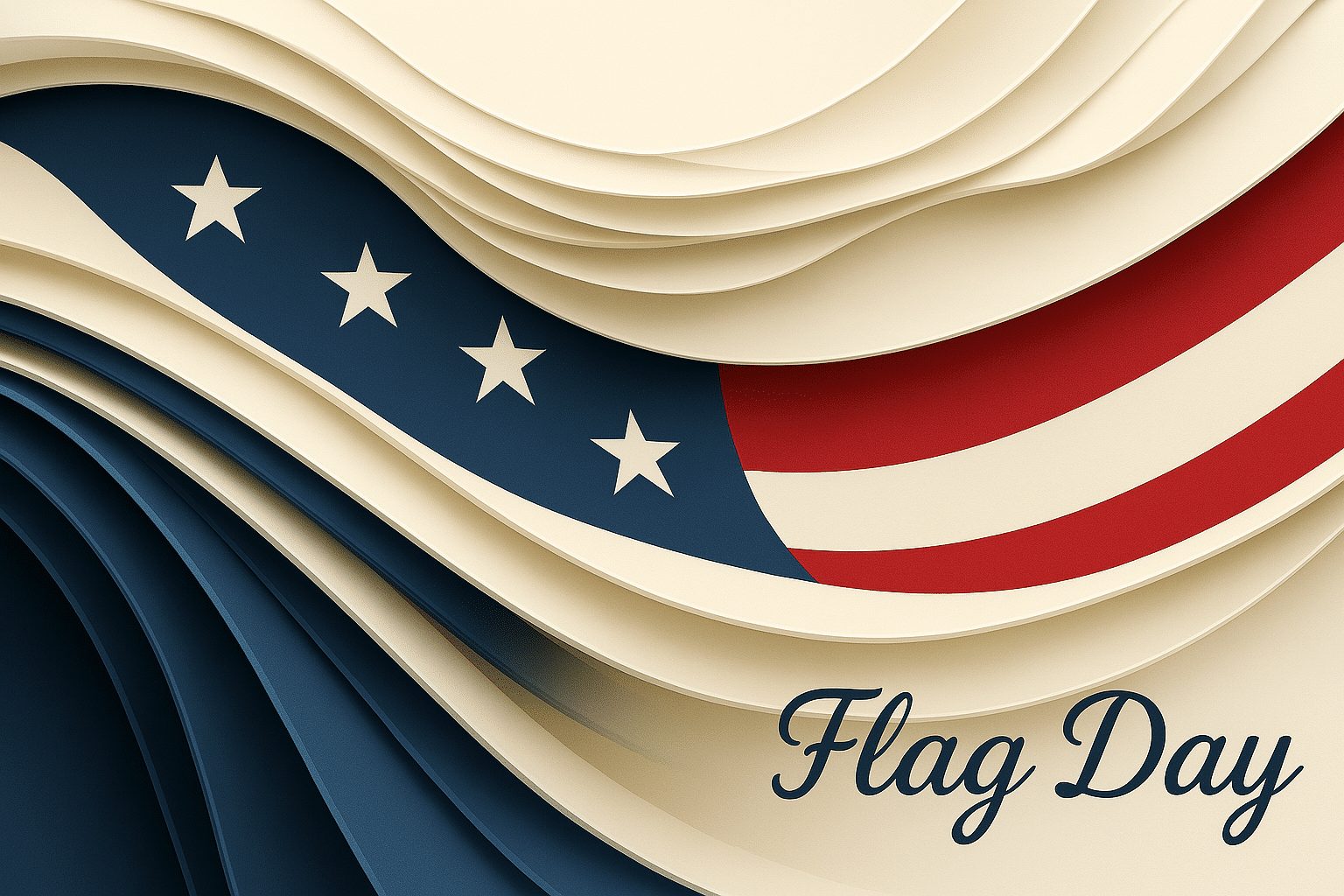What is Flag Day?
Flag Day is celebrated every year on June 14 in the United States. The day marks the adoption of the American flag in 1777. That was when the Second Continental Congress declared that the flag should have thirteen stripes and thirteen stars, one for each of the original colonies. Over time, stars were added as new states joined the Union.
Flag Day is a time to reflect on national identity and unity. It honors the symbol that represents freedom, struggle, and resilience. People across the country display the flag, attend ceremonies, and learn more about its history and meaning.
History and Origin
The idea for Flag Day began in the late 1800s. A schoolteacher in Wisconsin, Bernard J. Cigrand, held the first known celebration in 1885. He believed the flag deserved its own day of recognition. His efforts inspired many others to promote the idea of a national observance.
In 1916, President Woodrow Wilson proclaimed June 14 as Flag Day. That made it an official annual observance. In 1949, Congress passed a law making Flag Day a national day of celebration, though it is not a federal holiday. Since then, people across the country have marked the occasion in schools, city halls, and public spaces.
Who participates in Flag Day?
- Veterans’ groups: Lead parades, flag ceremonies, and educational events.
- Schools and educators: Teach students about the flag’s history and its role in American society.
- Local governments: Host official ceremonies and community activities.
- Civic organizations: Plan public events, such as flag retirement ceremonies and history talks.
- Individuals: Fly the flag at home and participate in local observances.
Slogans and Themes
Slogans such as “Honor the Flag,” “Old Glory Forever,” and “Unity Under the Stars and Stripes” are often used. The themes highlight patriotism, remembrance, and national pride. The flag stands for freedom and is a unifying symbol in times of challenge and celebration.
Colors, Symbols, and Patterns
Colors
- Red: Represents bravery and valor.
- White: Stands for purity and innocence.
- Blue: Symbolizes justice, vigilance, and perseverance.
Symbols
- Stars: Represent the 50 states of the Union.
- Stripes: Stand for the 13 original colonies.
- The American flag: A national emblem known as “Old Glory.”
Patterns
- Star patterns: Used in flags, banners, and educational displays.
- Striped designs: Found in parade decorations and patriotic clothing.
- Red-white-blue motifs: Used in crafts, posters, and public displays.
Most Used Hashtags
- #FlagDay
- #StarsAndStripes
- #OldGlory
- #AmericanFlag
- #HonorTheFlag
How do you celebrate Flag Day?
- Fly the flag: Display the American flag at home, work, or in your neighborhood.
- Join a parade: Attend or take part in local parades and community events.
- Visit a memorial: Pay tribute to veterans and those who served the country.
- Learn the history: Read about the flag’s evolution and what it represents.
- Participate in a ceremony: Attend a flag-raising or retirement ceremony.
Why is Flag Day important?
Flag Day is important because it honors a symbol that represents the nation’s values and ideals. The flag is more than a piece of fabric. It stands for freedom, democracy, and unity. For many, it is a reminder of those who served, those who fought, and the rights people continue to defend.
The day encourages reflection, pride, and a renewed sense of belonging. It is a simple yet powerful way to connect with the nation’s past and present.
Features
June 14: Flag Day (United States)
Why do you keep falling for the same type?
Read the article Lovemaps: the hidden blueprint of our love.

